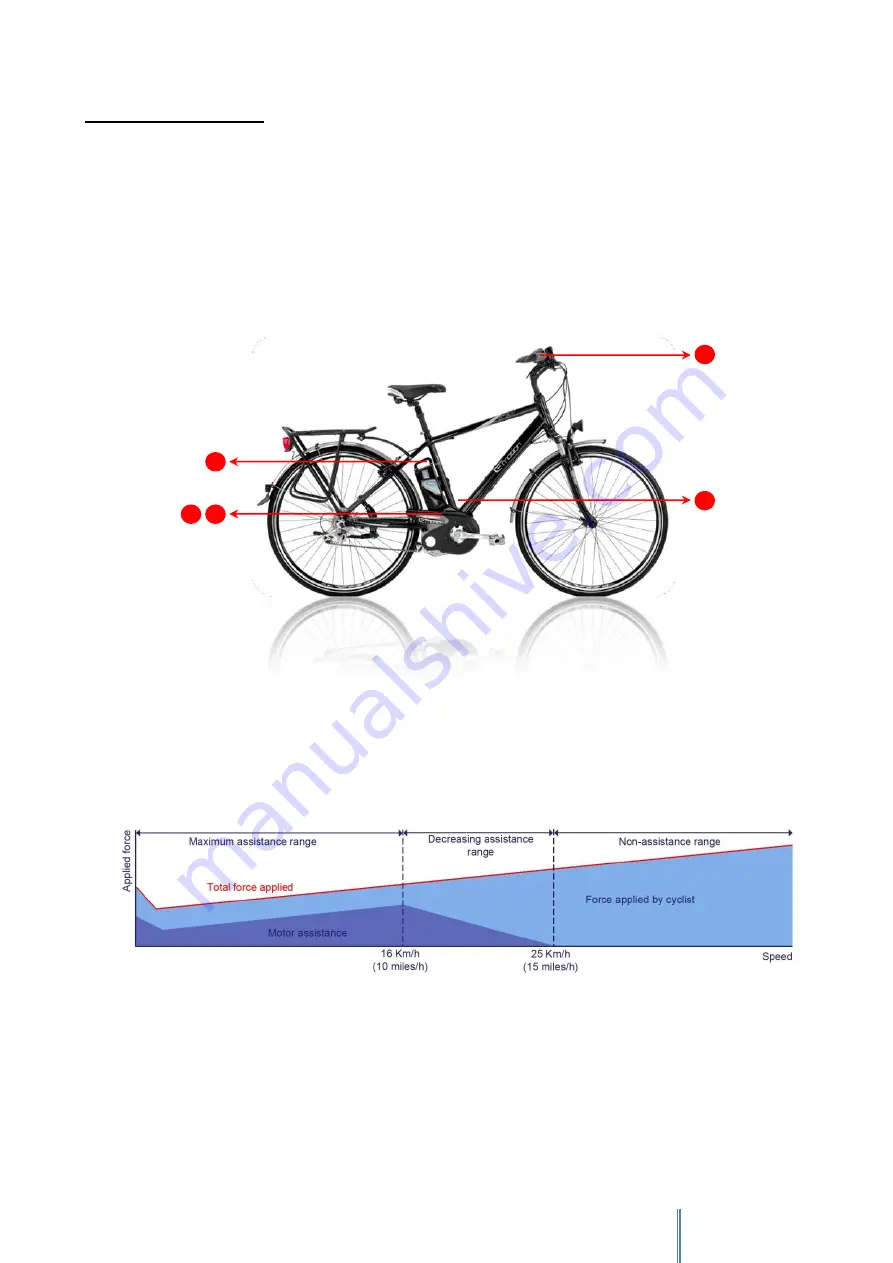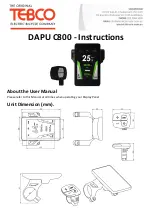
48
PEDAL ASSISTANCE
How does it work?
The E-MOTION pedal assistance system comprises the following elements:
A.
A battery, which provides power for the motor’s operation.
B.
A motor, which drives the bike
C.
A control console, which allows the selection of assistance levels.
D.
A torque sensor, which reads the force applied on the pedal by the user
E.
A control unit, which performs as the system's brain by receiving and sending signals to other elements.
After the user starts the system by means of the control console, the control unit activates all the system
elements. From then onwards, the force applied on the pedal is read by the torque sensor, which sends a signal
to the control unit. The control unit processes this signal and activates the motor, which is powered by the
battery. This process is immediate, in such a way that the motor responds to the force applied to the pedals
instantaneously. When the system is connected, the motor remains inactive if no force is applied.
Graphic representation of the pedal assistance system E-MOTION (PANASONIC motor)
From 0 to 16 km/h, the assistance ratio is 1.5 times the force applied in
ECO
mode. In
STANDARD
mode, it is 2
times the pedalling force and in
HIGH
mode it is multiplied by 2.6. Between 16 and 25 km/h, assistance is
reduced progressively until reaching 0% above 25 km/h (legal limit for pedal assisted bicycles). Above this
speed, the bicycle travels exclusively by means of force applied by the cyclist and without any type of electronic
help.
A
C
D
E
B
Содержание e-motion
Страница 2: ...2 ...
Страница 129: ...129 ...
Страница 130: ...130 ...
Страница 131: ...131 REF MUEP R1 ...
















































